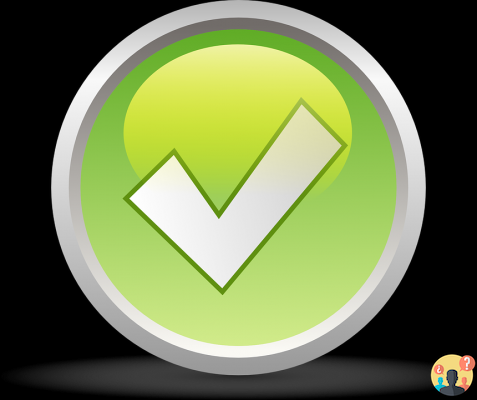
The term sciatica refers to the pain felt when the sciatic nerve is compressed by inflammation or other spinal abnormalities. When you have sciatica, the experience is not only painful, but also uncomfortable. Some people have difficulty standing, walking, sitting, and many have difficulty learning to sleep with sciatica. For some, sleeping with sciatica can lead to bedtime anxiety as you prepare for the possibility of not yet getting a good night's rest. So how do you sleep with sciatica?
How to sleep with sciatica: Understanding the causes
When people suffer from back pain, they often call it sciatica. But what causes sciatica? Sciatica is a very common type of back pain that radiates into the sciatic nerve, hence the name sciatica. The sciatic nerve runs from the lower back and down each leg. Sciatica occurs when the root or sciatic nerve roots, located in the lower lumbar spine, are compressed or irritated.
Causes of sciatica include:
- Spinal canal narrowing in the lower back caused by lumbar spinal stenosis.
- Degenerative disc disease when the discs that cushion the vertebrae break down and cause two or more vertebrae to rub together, usually caused by age.
- Spondylolisthesis, when one vertebra slides over another.
- Muscle spasms in the buttocks or back.
- Pregnancy.
- Other causes include lack of exercise, obesity, wearing high heels or sleeping on a mattress that is too soft.
Tips for sleeping with sciatic pain?
Sciatica pain can make it almost impossible to find a position to sleep with sciatica. Symptoms don't subside just because it's time for you to go to bed. And often, a shooting pain in your foot or a burning sensation in your calf can wake you up abruptly in the middle of the night. Try these tips to help you fall asleep and wake up refreshed and ready to face the day.

1) Choose a suitable mattress
While your mattress isn't the cause of your sciatica problems, it could be making it worse. An orthopedic bed is a great option if you find yourself losing sleep due to sciatic pain. Soft memory foam mattresses can quickly lose their shape and not properly support your spine.
- For stomach sleepers : Invest in a firmer mattress that aligns your body and keeps you afloat.
- For side sleepers : Find a soft mattress that provides hip and shoulder support.
- For back sleepers : Look for a medium-firm mattress that gives you full body support.
2) Use a body pillow
When sleeping with sciatica, use a side sleeping pillow or simply place a pillow between your knees. By placing a pillow between your knees, it helps keep your spine, hips, and pelvis aligned.
If sleeping with a pillow feels too bulky or uncomfortable, consider mimicking the same sleeping position without the spine. It will also align your spine with your hips and pelvis.
3) Raise your knees
For some, placing a pillow between their knees to sleep with sciatica just isn't enough. Resting on your back, bend your knees a little. Slip a pillow under your knees and keep adding pillows until you find a comfortable position.
If you're fully committed to finding the ideal sleeping position for sciatica, consider investing in a mechanical bed. With this one, you can adjust to keep your legs elevated and fix it in a position that gives you comfort.
4) Take a bath before bed
A hot bath can relax you, release pain-killing endorphins and relax the muscles around your nerve roots. Your bath water should be warm and pleasant, not hot. Another option is to use a hot water bottle on your lower back or buttocks just before bedtime. Do not forget that the temperature should be warm.

5) Do some stretches before bed
It is not recommended to exercise before bed, as you may find yourself quickly awakened by a rush of adrenaline. However, simple stretches before bed can improve sleep with sciatic pain. Many of these stretches can be done on your bed, so you don't even have to wake up to do them.
- Knees to chest
- Pelvic tilt
- Knees to opposite shoulder
6) Choose your best side
If a pillow isn't working, which it sometimes does, consider use a tennis ball. Next time you put on your pajamas, choose pants/shorts with pockets and place a tennis ball on the side you don't want to sleep on. You are less likely to tip sideways due to the discomfort of the tennis ball.
7) Sleep on your back
There is no "correct" way to sleep with sciatica. Although some people find relief on their side, others find it by sleeping on their backs. Try sleeping on your back with the raised knees. If you find that doesn't work, switch to a side sleeping position. You may even have to switch between positions in the middle of the night.
The secret to finding comfort sleeping on your back is toprovide lower back support.
If you don't have a support bed, add a small pillow or throw under your tailbone to provide the stability and support your back needs to feel comfortable in this position.
8) Take your prescribed medications
If your doctor has prescribed painkillers, take them as prescribed if your sciatic pain is not allowing you to sleep. Rest is essential and can really help the healing process. If you do not want to take prescribed medication, the over-the-counter anti-inflammatory medications can also help reduce some of your sciatica.

9) Develop a nighttime routine
After taking a bath and doing some stretching, put on comfortable sleepwear and relax in bed. Avoid watching TV or using your smartphone right before bed. Create a peaceful and quiet sleeping environment.
Your nighttime routine should be the same every night. To have better sleep habits, you need to go to bed and wake up at the same time every day, including weekends. A fixed sleep schedule will help you fall asleep faster.
10) Don't sleep on your stomach
If possible, it's best to avoid it if you have sciatica. Stomach sleeping is actually considered the worst sleeping position because it flattens the natural curvature of the spine and strains your neck when your head is turned to one side. Although this position relieves sciatica, avoid it so that you don't suffer from back and neck problems in the future.
For those who can only comfortably sleep on their stomach, consider switching from your mattress to a medium firm mattress. These types of beds will provide your body with the support it needs to stay afloat and keep your spine aligned.
11) Try one of the best sleeping positions
Finding a comfortable sleeping position with sciatica is one of the biggest challenges people face. Here are some of the best sleeping positions for those suffering from lower back pain due to sciatica.
Use a pillow between your legs - the pillow is there to better align the hips, pelvis and spine.
Sleep in the fetal position - When you sleep in this position, you open up the space between the vertebrae, which relieves pressure.
Use a pillow under your abdomen - If you can only sleep on your stomach, add a pillow under your abdomen. This is especially helpful for those with degenerative disc disease.
12) Change your neck pillow
Many people sleep on fluffy pillows that provide very little support. Keeping your cervical spine aligned is very effective in reducing lower back pain. Invest in a neck pillow high-quality support can help you avoid suffering from neck pain, as well as lower back pain, and ultimately find a more comfortable position at night.
13) Use targeted pain relief solutions
Many patients use cold and hot therapies before bedtime to help relieve their sciatica symptoms. However, these effects can wear off in the middle of the night and people often wake up unable to return to a comfortable position.
L'use of pain relief patches localized can help provide continuous pain relief throughout the night. This is especially helpful when pain symptoms are felt in a very specific location.
14) Try sciatic massage at home
Massage therapy can help relieve symptoms of sciatica and lower back pain to help you fall asleep faster and enjoy a good night's sleep. Learning about some sciatica massages you can do at home can be part of your bedtime routine to make sure your sciatica symptoms don't flare up at night.
Massage of sciatica with palm and thumb:
- Start with your palms on your lower back. Rub this area towards your spine and down towards your buttocks.
- Place your hands at your waist and run your fingers around your sides. Apply firm pressure towards the spine. Make sure the pressure you apply does not cause discomfort.
Sciatica Massage with Joint Pressure:
- Start lying on your back with your knees bent and your feet flat on the floor. Close your fists and place them on the right and left side of your lower back.
- Position your fists so that your knuckles are against your back.
- Stay in this position for a minute or two.
- Position yourself in the fetal position. Hold this for about five minutes before getting up.
15) Invest in some personal care equipment
Invest in personal equipment that can help relieve sciatica symptoms with acupressure. Talk to your doctor or physical therapist before buying any of these products to see how they can be used to relieve your sciatica symptoms.
Knowing how to sleep with sciatica doesn't have to be a nightmare. Using certain resources and different sleeping techniques can help you find the perfect sleeping position that's right for you. Getting rest while suffering from sciatica is necessary to help your body repair itself and relieve the symptoms of sciatica.
If your sciatic pain has become chronic and conservative treatment does not relieve your pain, this may indicate that the condition causing the sciatica may require surgery.


























